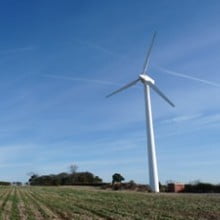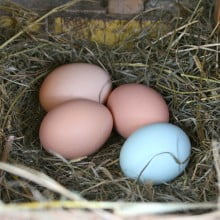We are often asked why we settled on a group of five homes when planning the development at Hockerton. There are practical reasons such as the size of the plot available, and planning requirements such as the need to incorporate street lighting in larger developments. But there is also a social reason. The following excerpt from OpenLearn LabSpace on team dynamics is a helpful summary…
How many people in a team?
Does the task need a lot of people doing the same task (for example, an advice centre) or a small, expert team addressing different parts of the task (for example, writing new information leaflets)? The size of the team needed will be an important consideration. The larger the team, the greater the potential variety of skills and knowledge, but as the size of the team increases each individual will have fewer opportunities to participate and influence proceedings. The size of a team is therefore a trade-off or balance between variety and individual input. A team of between five and seven people is considered best for the effective participation of all members, but to achieve the range of expertise and skills required, the group may need to be larger. This brings with it the challenges of how to manage and supervise a large team. In health and social care, multi-organisational teams may be large given the need to ensure representation from different organisations required to plan and deliver a particular service or address an individual service user’s case.
Homogeneous groups, whose members share similar values and beliefs, may be more satisfying to work in and may experience less conflict, but they tend to be less creative and produce greater pressures for conformity. In contrast, heterogeneous groups, whose members have a wider range of values and beliefs, are likely to experience greater conflict, but they have the potential for greater creativity and innovation.
Our shared values and beliefs certainly deliver less conflict, but we’ll leave it to you to decide whether it also means we are less creative!
 The Sustainable Hockerton community-owned wind turbine continues to turn a profit! Members of the Society have received payments of 8% interest and there is enough money left in the bank to donate £10,000 to the village to pursue sustainability and energy saving projects. Not bad for the second year of full operation! The most frequent quote from investors was “I only wish I had invested more!”
The Sustainable Hockerton community-owned wind turbine continues to turn a profit! Members of the Society have received payments of 8% interest and there is enough money left in the bank to donate £10,000 to the village to pursue sustainability and energy saving projects. Not bad for the second year of full operation! The most frequent quote from investors was “I only wish I had invested more!”
If you would like help with setting up a community wind turbine project please contact us.
 The residents of Hockerton Housing Project have installed another community-owned solar PV system. This will expand the PV generation by the co-operative from 7.6kW to 13.6kW and make the site a net exporter of electricity.
The residents of Hockerton Housing Project have installed another community-owned solar PV system. This will expand the PV generation by the co-operative from 7.6kW to 13.6kW and make the site a net exporter of electricity.
We decided to install additional capacity as our current energy use is higher than originally expected, due to the number of people working in our business or from home. The additional capacity also prepares us for electric vehicles.
Conversations have started about going off-grid. It seems that the risks to grid supply do not outweigh the environmental and financial costs of batteries… for now.

The Daily Express has featured Hockerton Housing Project to illustrate the benefits of sustainable co-housing developments…
As my car bumps along the potholes of the dirt track, the setting that unfolds before me is idyllic. Sheep graze lazily in the field to my left and a dozen or so chickens cluck like gossiping washerwomen as two young children excitedly collect eggs from the henhouse.
In the distance there are beehives while ahead ducks glide effortlessly across the still surface of a lake as a heron swoops in. Nearby a couple of men wearing fleeces are engrossed in conversation.
Though you may imagine that I’ve arrived in a sleepy country park or farmyard this in fact is a snapshot of life at one of the many so-called co- housing projects that are springing up all over Britain…
It’s an unconventional way of life that certainly wouldn’t be right for everyone but it’s impossible not to admire what they stand for at HHP. I can’t deny that as I drive back up the dirt track and out into the rat race again, I can feel my own stress levels kick back in.
Read the full feature, including an interview with residents Bill and Lou, here.





